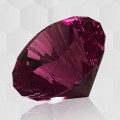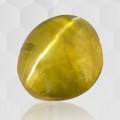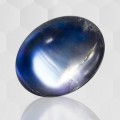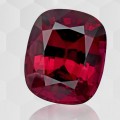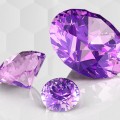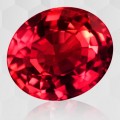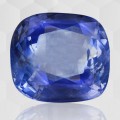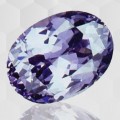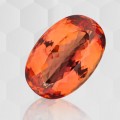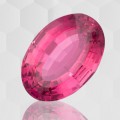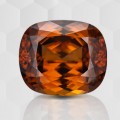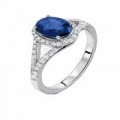
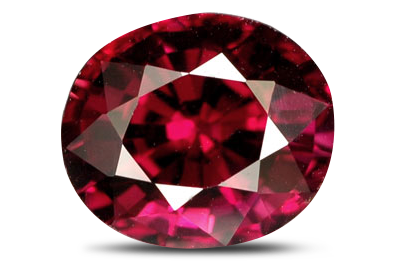
As a group of precious gemstones Chrysoberyl is known to occur as three distinct varieties namely Chrysoberyl, alexandrite and cymophane. All varieties are chemically identical, being an aluminate of beryllium (Beryllium alluminium oxide – BeAl2O4 ) although distinctly dissimilar in appearance. Being an all chromatic mineral, in its purest form, it would be colourless; Chrysoberyl are by no means rare. Very often the different varieties have ferric oxide and chormic oxide as colouring element “impurities”. As in corundum these colouring elements do not in any way affect the chemical formula, as the quantities are so negligible. Approximately the alumina content is as 80% and the beryllia content rarely exceeds 20%.
Chrysoberyl crystallizes in the orthorhombic system, the crystals invariably occurring as inter- penetrant complex twin crystals, and as such simple individual crystals are rare. The mineral has a hardness of 8.5 on Moh’s scale and because of this superior hardness it could take and retain a brilliant polish. It is doubly refractive and its refractive indices are 1.745-1.754 and its birefringence could vary between 0.008 and 0.010. The different colours and varieties could however show slight variations in these properties. Certain alexandrites from Sri Lanka have recorded a birefringence of 0.010. The specific gravity varies between 3.71 and 3.73.
In Sri Lanka gem Chrysoberyl is mostly found as water worn pebbles in the alluvial gem gravels. The gemstones of this group are known to have wide distribution in and among the main gem producing regions of this country and are mostly localized around Rakwana, Buluthota, Deniyaya, Morawaka, Elehera, Avissawella, Horana, Matugama, Panadura, Ratnapura, Alutgama, Ambalanthota, Agalawatte, Pelawatte, Bulathsinghala, Kalapugama, and Mestiya.Zoysa (1986) makes an important reference to a location of gem quality Chrysoberyl near Pattara close to Morawaka. A description of the material mined from this pegmatite in his words is as follows: - “Chrysoberyl mined from the pegmatite is transparent, apple green in colur, and varies in size from 1mm. to 8mm. Some worked specimens displayed chatoyancy while a few possessed sufficient colour change to be termed as alexanadriete.” The extent and the potential of this occurrence is not as yet known and await further surveys but activity is brisk.
Chrysoberyl
Quite unlike corundum, Chrysoberyl occurs only in a few colours, the common colours being yellow, golden yellow, brownish yellow, yellowish green, bluish green and faint olive green.Chrysoberyl occurs in varying degrees of transparency ranging from transparent and clear to cloudy translucent and opaque.
The classification of chrysoberyl into varieties depends on colour, colour changing properties, inclusions and reflection effects these could produce.
Gem quality chrysoberyl is generally transparent and when polished makes beautiful gemstones. The golden yellow and the green varieties are much favoured and are in demand. Stones of considerably big sizes are not uncommon in Sri Lanka. Colours in chrysoberyl are due to the presence of ferrous iron in the composition.

